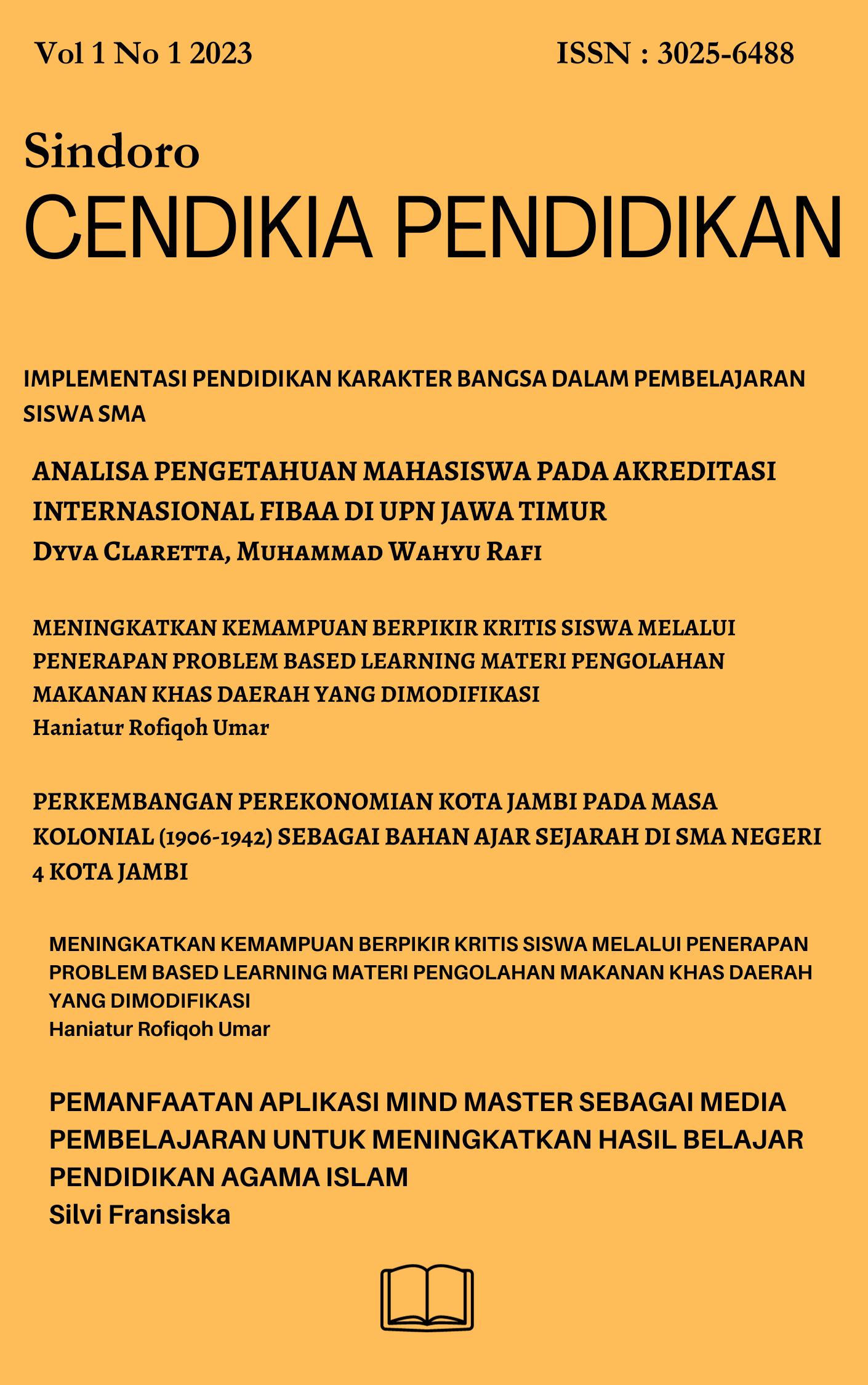MOTIVASI BELAJAR SISWA DENGAN MENGGUNAKAN MODEL STUDENT TEAMS ACHIEVEMENT DIVISIONS (STAD) PADA ANAK SMA
Main Article Content
Abstract
This study aims to improve students' learning motivation by implementing the Student Teams Achievement Divisions (STAD) learning model in high school students. The STAD model is a cooperative learning method that emphasizes group cooperation, individual responsibility, and group evaluation to achieve learning objectives. This study uses a classroom action research method with two cycles. Each cycle consists of planning, implementation, observation, and reflection stages. The subjects of the study were 30 students in grade X of a high school. Data were collected through observation, interviews, learning motivation questionnaires, and learning outcome tests. The results showed that the application of the STAD model significantly increased students' learning motivation. In the first cycle, the average student learning motivation was in the moderate category, and increased to the high category in the second cycle. In addition, student learning outcomes also showed a significant increase, with the average student score increasing from 70 in the first cycle to 85 in the second cycle. The conclusion of this study is that the STAD model is effective in improving the motivation and learning outcomes of high school students. It is recommended that teachers use the STAD model as an alternative in developing fun and effective learning strategies.
Penelitian ini bertujuan untuk meningkatkan motivasi belajar siswa dengan menerapkan model pembelajaran Student Teams Achievement Divisions (STAD) pada siswa SMA. Model STAD merupakan salah satu metode pembelajaran kooperatif yang menekankan kerja sama kelompok, tanggung jawab individu, dan evaluasi kelompok untuk mencapai tujuan pembelajaran. Penelitian ini menggunakan metode tindakan kelas (Classroom Action Research) dengan dua siklus. Setiap siklus terdiri atas tahapan perencanaan, pelaksanaan, observasi, dan refleksi. Subjek penelitian adalah siswa kelas X di salah satu SMA yang terdiri atas 30 siswa. Data dikumpulkan melalui observasi, wawancara, angket motivasi belajar, dan tes hasil belajar. Hasil penelitian menunjukkan bahwa penerapan model STAD secara signifikan meningkatkan motivasi belajar siswa. Pada siklus pertama, rata-rata motivasi belajar siswa berada pada kategori sedang, dan meningkat ke kategori tinggi pada siklus kedua. Selain itu, hasil belajar siswa juga menunjukan peningkatan yang signifikan, dengan rata-rata nilai siswa meningkat dari 70 pada siklus pertama menjadi 85 pada siklus kedua. Kesimpulan dari penelitian ini adalah bahwa model STAD efektif dalam meningkatkan motivasi dan hasil belajar siswa SMA. Disarankan agar guru menggunakan model STAD sebagai salah satu alternatif dalam mengembangkan strategi pembelajaran yang menyenangkan dan efektif.
Article Details

This work is licensed under a Creative Commons Attribution-NonCommercial 4.0 International License.
This work is licensed under a Creative Commons Attribution-ShareAlike 4.0 International License.
Authors who publish with this journal agree to the following terms:
- Authors retain copyright and grant the journal right of first publication with the work simultaneously licensed under a Creative Commons Attribution License that allows others to share the work with an acknowledgement of the work's authorship and initial publication in this journal.
- Authors are able to enter into separate, additional contractual arrangements for the non-exclusive distribution of the journal's published version of the work (e.g., post it to an institutional repository or publish it in a book), with an acknowledgement of its initial publication in this journal.
- Authors are permitted and encouraged to post their work online (e.g., in institutional repositories or on their website) prior to and during the submission process, as it can lead to productive exchanges, as well as earlier and greater citation of published work
References
Arends, R. I. (2012). Learning to teach (9th ed.). McGraw-Hill.
Kagan, S. (2010). Cooperative learning (3rd ed.). Kagan Publishing.
Nurhadi, D., & Bambang, A. (2011). Penerapan model pembelajaran kooperatif STAD untuk meningkatkan hasil belajar siswa SMA. Penerbit Remaja Rosdakarya.
Slavin, R. E. (1995). Cooperative Learning: Theory, Research, and Practice. Allyn & Bacon.
Widodo, W., & Suyanto, S. (2010). Model pembelajaran kooperatif tipe STAD untuk siswa SMA. Penerbit Universitas Negeri Yogyakarta.

